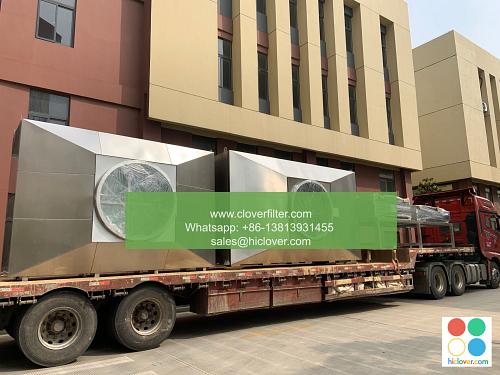Air Filter Replacement for Schools: A Guide

As educational institutions, schools have a responsibility to provide a healthy and safe environment for their students, teachers, and staff. One crucial aspect of maintaining a healthy indoor environment is ensuring proper air filtration. In this article, we will delve into the importance of air filter replacement for schools, highlighting various application areas, and providing a guide on how to implement an effective air filtration system.
Why Air Filter Replacement is Crucial for Schools
Indoor air quality (IAQ) is a significant concern in schools, as it can impact the health, comfort, and productivity of occupants. Poor IAQ can lead to respiratory problems, allergies, and other health issues, which can result in absenteeism and decreased academic performance. Air filters play a vital role in removing airborne contaminants, such as dust, pollen, mold, and bacteria, from the air. Regular air filter replacement is essential to prevent the buildup of these pollutants and maintain optimal IAQ.
Application Areas for Air Filter Replacement in Schools
Air filter replacement is not limited to a single area in schools. Various application areas include:
* Classrooms: Air filters in classrooms help remove allergens, dust, and other airborne particles, creating a healthy learning environment.
* Administrative Offices: Air filtration systems in administrative offices ensure a comfortable and healthy workspace for staff and faculty.
* Gymnasiums and Sports Facilities: Air filters in these areas help remove moisture, dust, and other airborne contaminants, reducing the risk of respiratory problems and slippery floors.
* Cafeterias and Kitchens: Air filtration systems in these areas help remove cooking fumes, grease, and other airborne particles, improving IAQ and reducing the risk of fires.
* Libraries and Media Centers: Air filters in these areas help preserve books, documents, and other materials by removing dust, pollen, and other airborne contaminants.
Types of Air Filters Used in Schools
Several types of air filters are used in schools, including:
* HEPA (High Efficiency Particulate Air) Filters: These filters are capable of removing 99.97% of airborne particles as small as 0.3 microns, making them ideal for classrooms and administrative offices.
* Activated Carbon Filters: These filters are effective in removing odors, gases, and volatile organic compounds (VOCs) from the air, making them suitable for cafeterias, kitchens, and gymnasiums.
* Pleated Filters: These filters are a cost-effective option for schools, offering a high level of filtration efficiency and a long service life.
Best Practices for Air Filter Replacement in Schools
To ensure optimal IAQ and extend the life of air filtration systems, schools should follow these best practices:
* Regular Maintenance: Schedule regular air filter replacement and maintenance to prevent the buildup of airborne contaminants.
* Filter Selection: Choose the right type of air filter for each application area, considering factors such as filtration efficiency, airflow, and service life.
* Staff Training: Educate staff and faculty on the importance of air filter replacement and how to properly maintain air filtration systems.
* IAQ Monitoring: Regularly monitor IAQ to identify areas for improvement and ensure that air filtration systems are functioning effectively.
Conclusion
Air filter replacement is a critical aspect of maintaining a healthy and safe environment in schools. By understanding the importance of air filtration, identifying application areas, and following best practices, schools can ensure optimal IAQ, improve the health and comfort of occupants, and reduce the risk of respiratory problems and other health issues. As educational institutions, schools have a responsibility to provide a healthy and supportive learning environment, and air filter replacement is a key component of achieving this goal. You haven’t provided a question or topic for me to respond to. Please provide more context or information so I can assist you. What would you like to talk about or ask?

